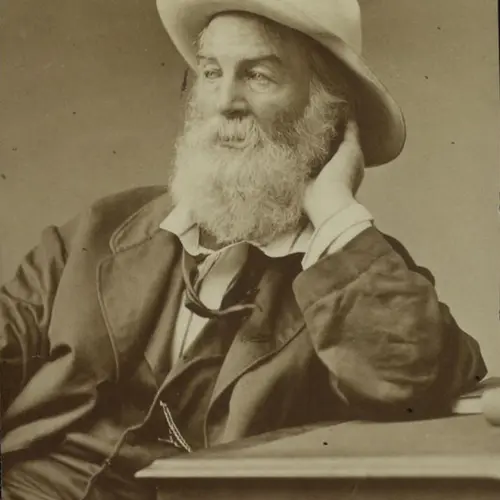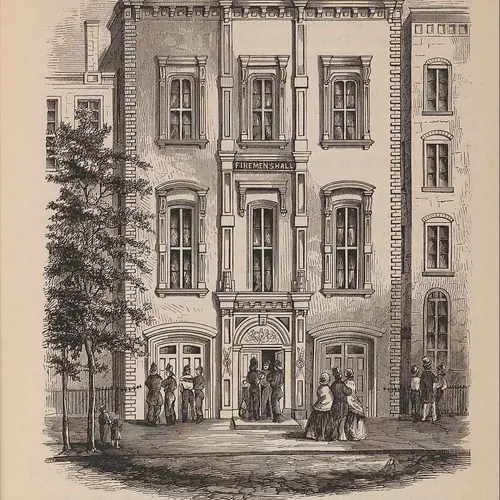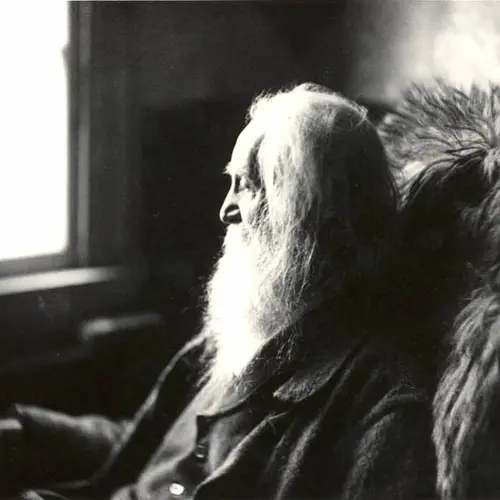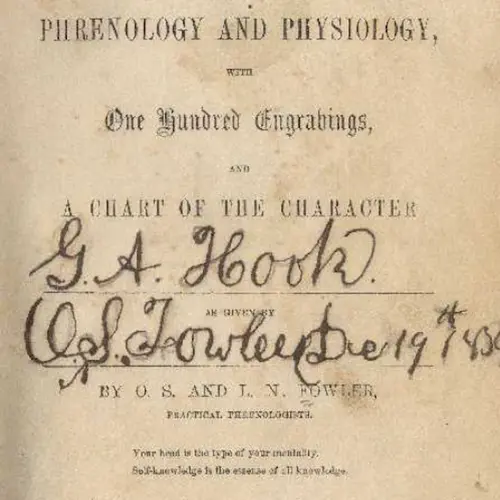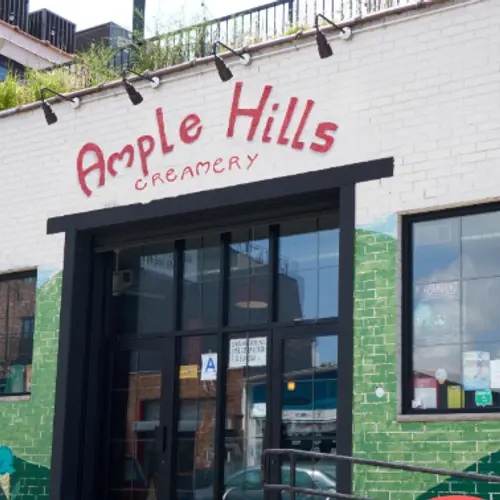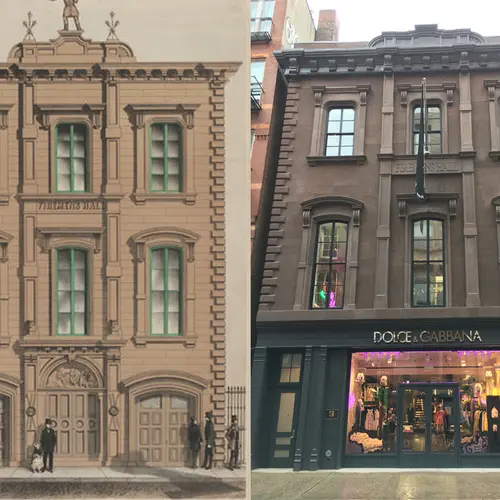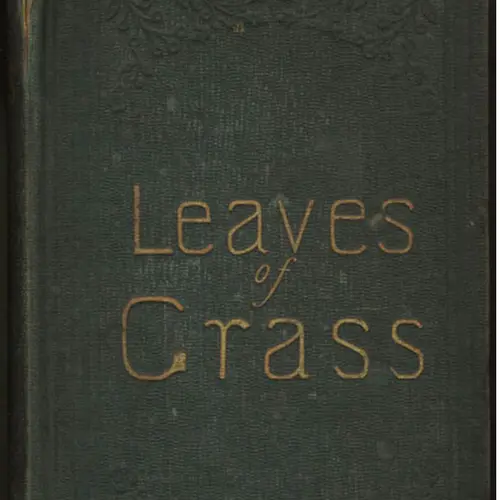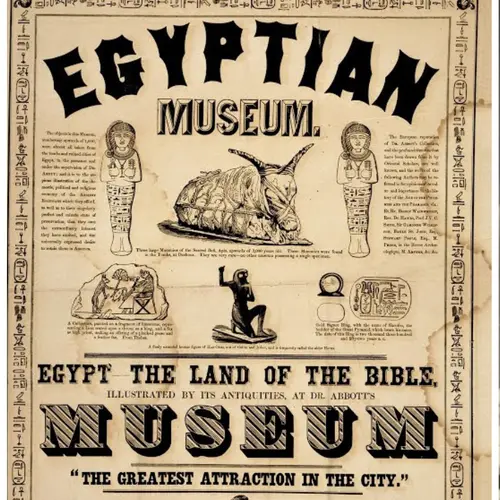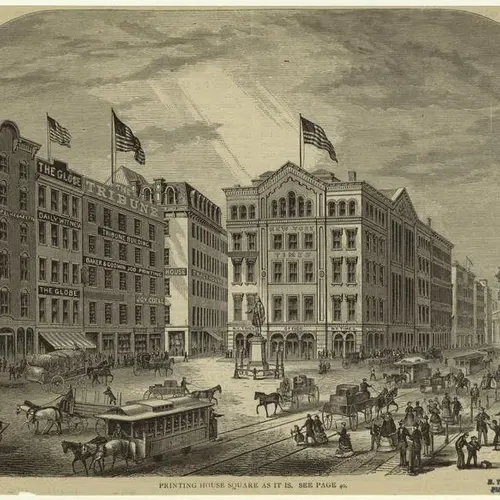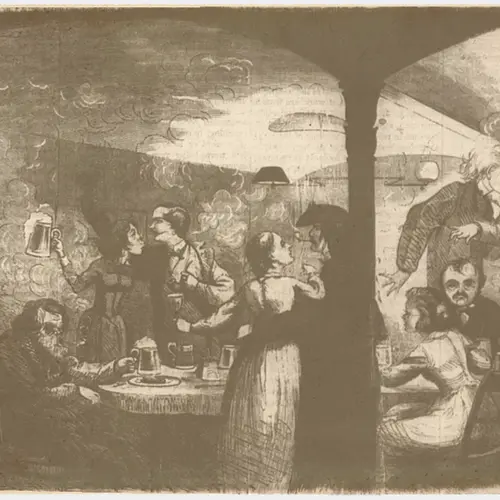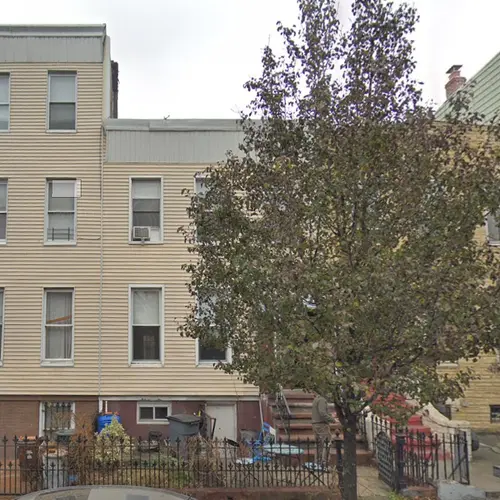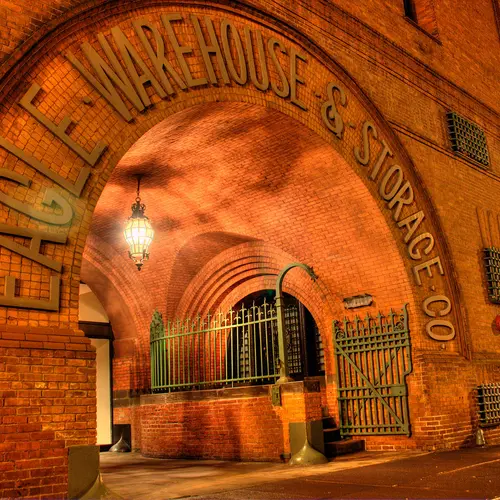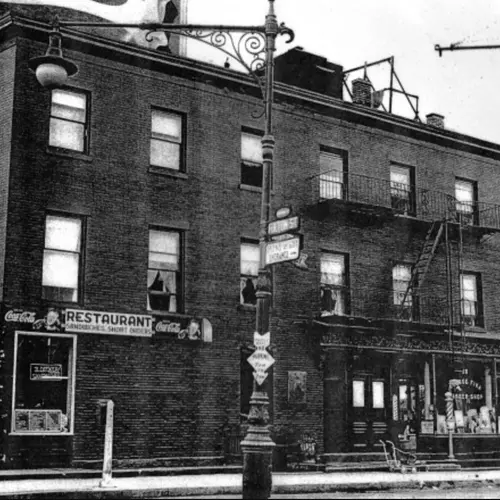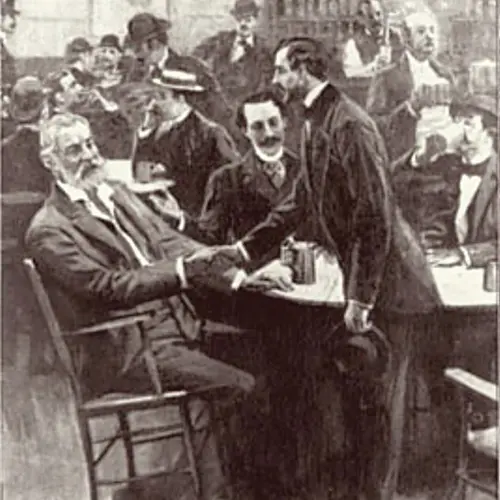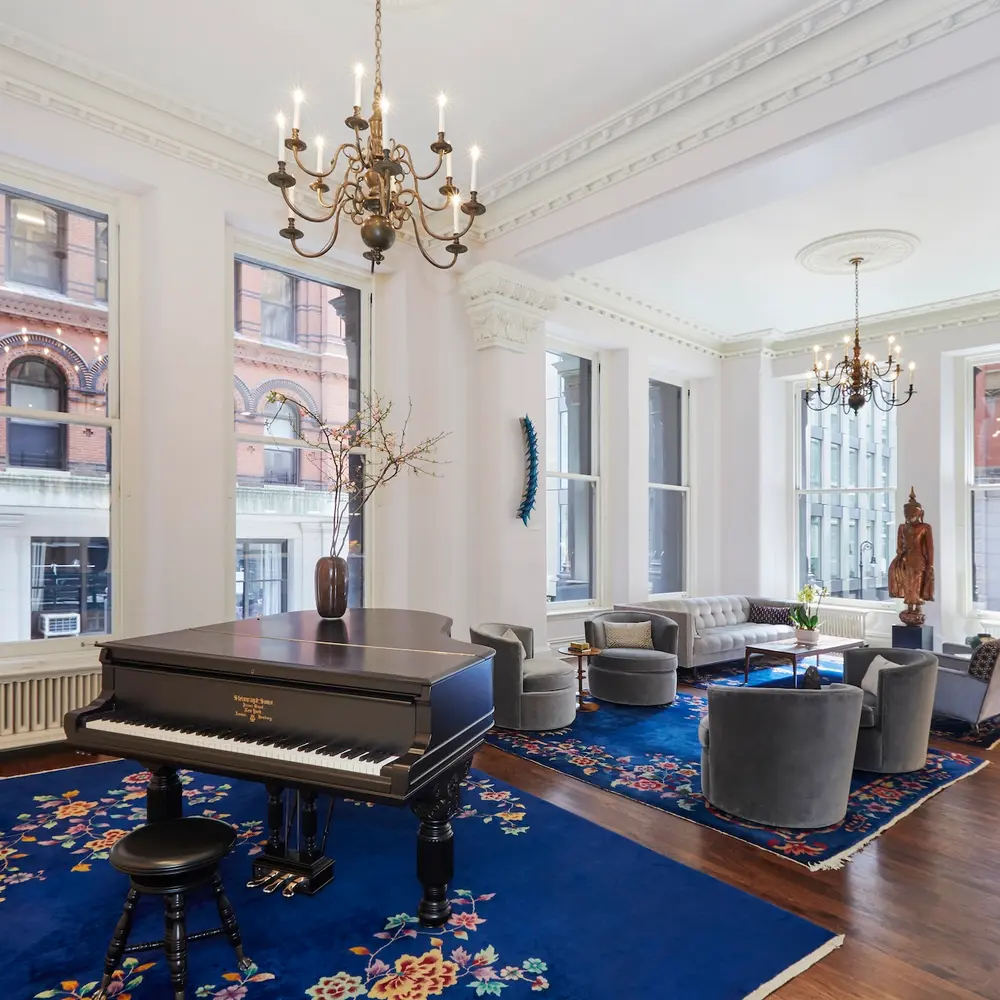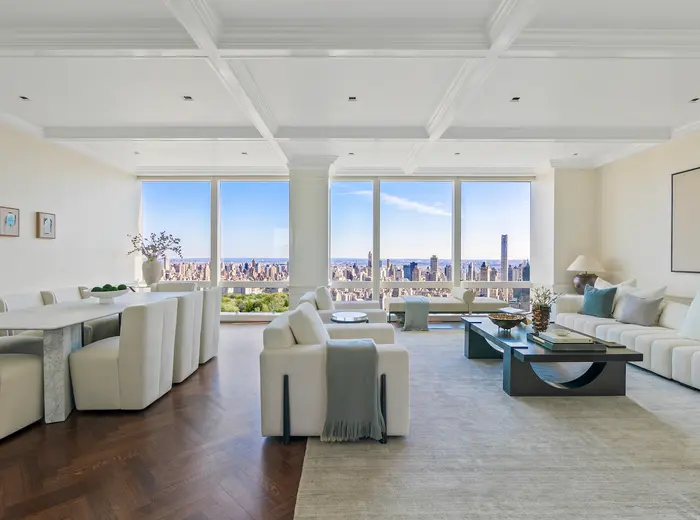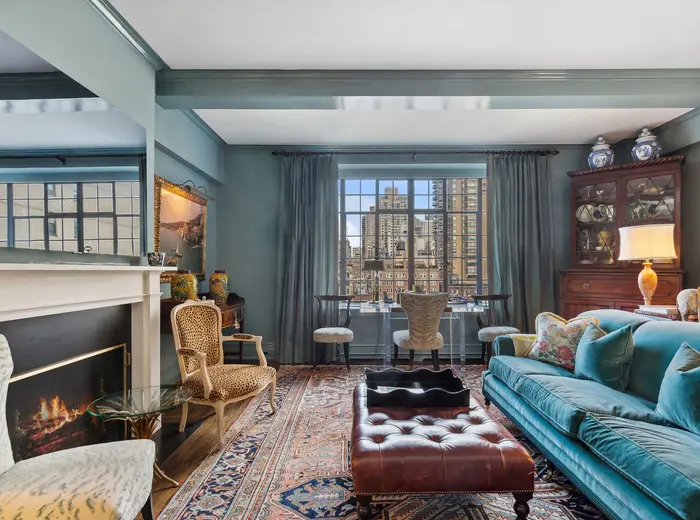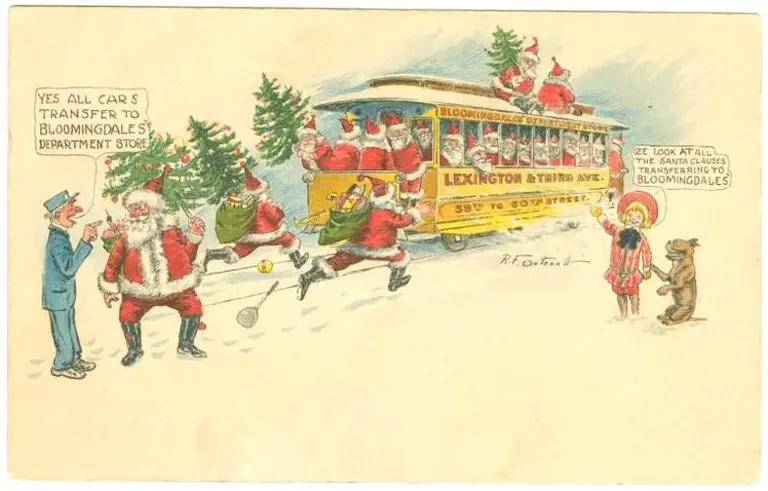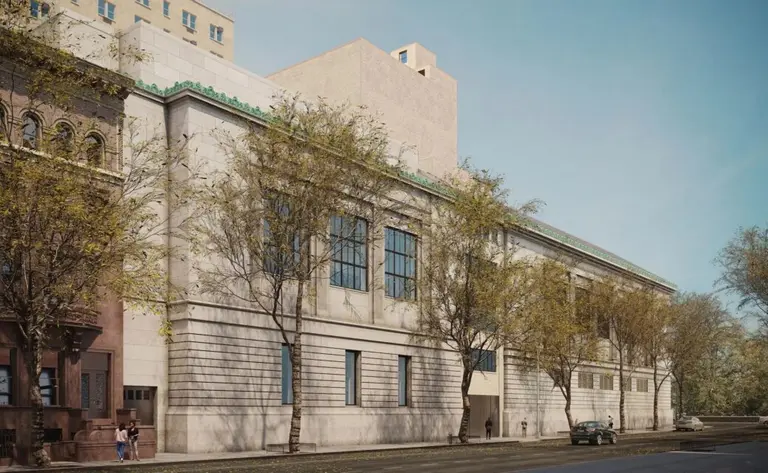Walt Whitman’s New York City: 10 sites where the poet left his mark
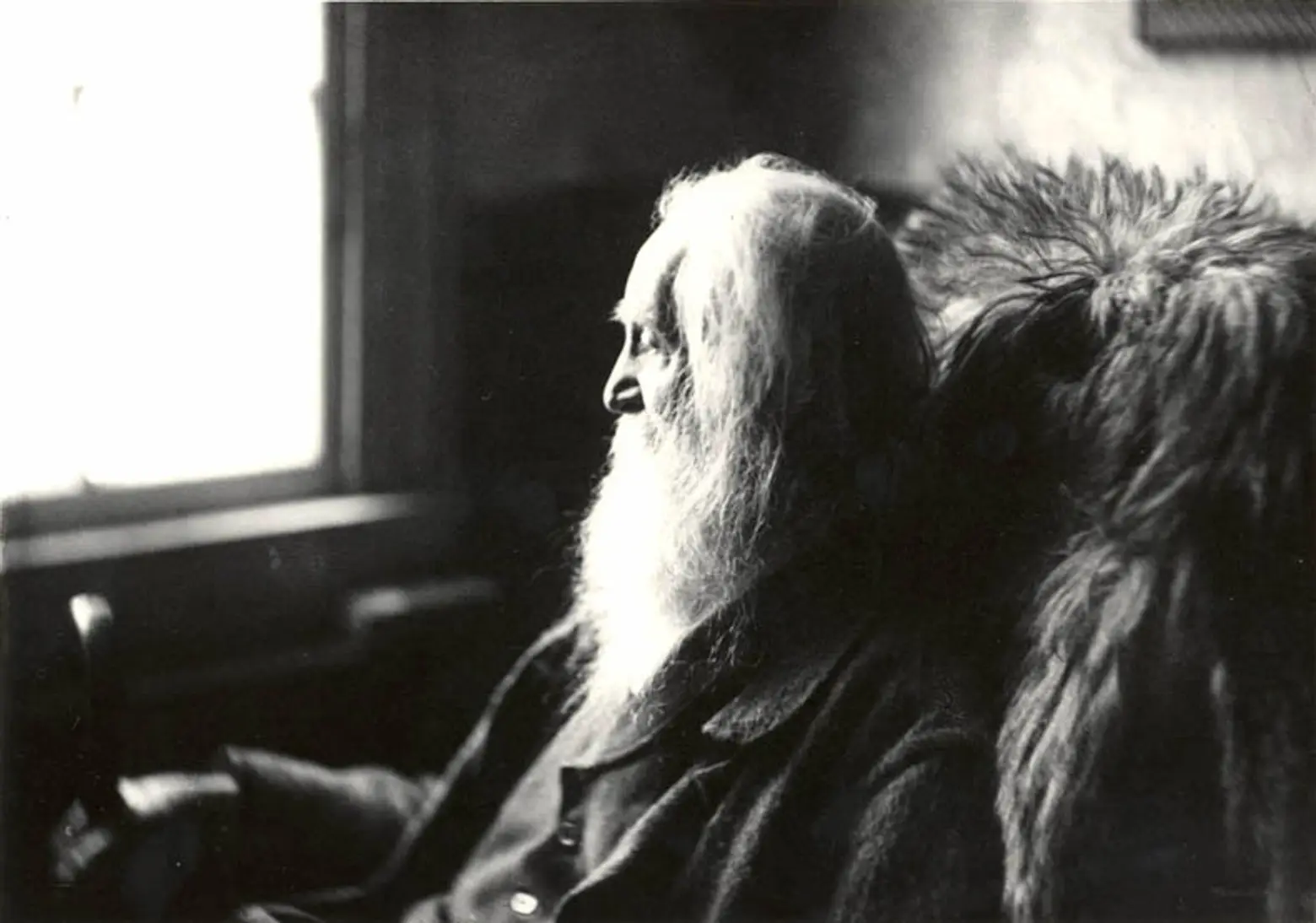
Walt Whitman (1881) courtesy of Hirshhorn Museum and Sculpture Garden, Smithsonian Institution
In his famous 1856 Poem, “Crossing Brooklyn Ferry,” Walt Whitman writes to future New Yorkers, “I am with you, you men and women of a generation, or ever so many generations hence, just as you feel when you look on the river and the sky, so I felt,…I too lived, Brooklyn of ample hills was mine, I too walk’d the streets of Manhattan Island.” Whitman, who so deeply captured the experience of living in this city, left his mark not only on Brooklyn and Manhattan, but also on the world as the father of free verse poetry, and one of America’s greatest artists. Since this year marks Whitman’s 200th birthday, we’re joining the ongoing celebration of his life and work by returning to the streets he walked, following in his footstep to 10 sites across New York associated with the poet.
1. Fulton and Cranberry Streets (Cadman Plaza West)
This location, now directly in front of the entrance to High Street A train, is the former home of Rome Brothers’ Print Shop, where Whitman published the first edition of Leaves of Grass in 1855. In the building on this site, torn down in 1961, Whitman created what would become one of the most celebrated books in the English language. Today, the Walt Whitman Initiative is working to install a memorial in the form of printing press, which will honor the site, and help bring public awareness to Brooklyn’s literary history.
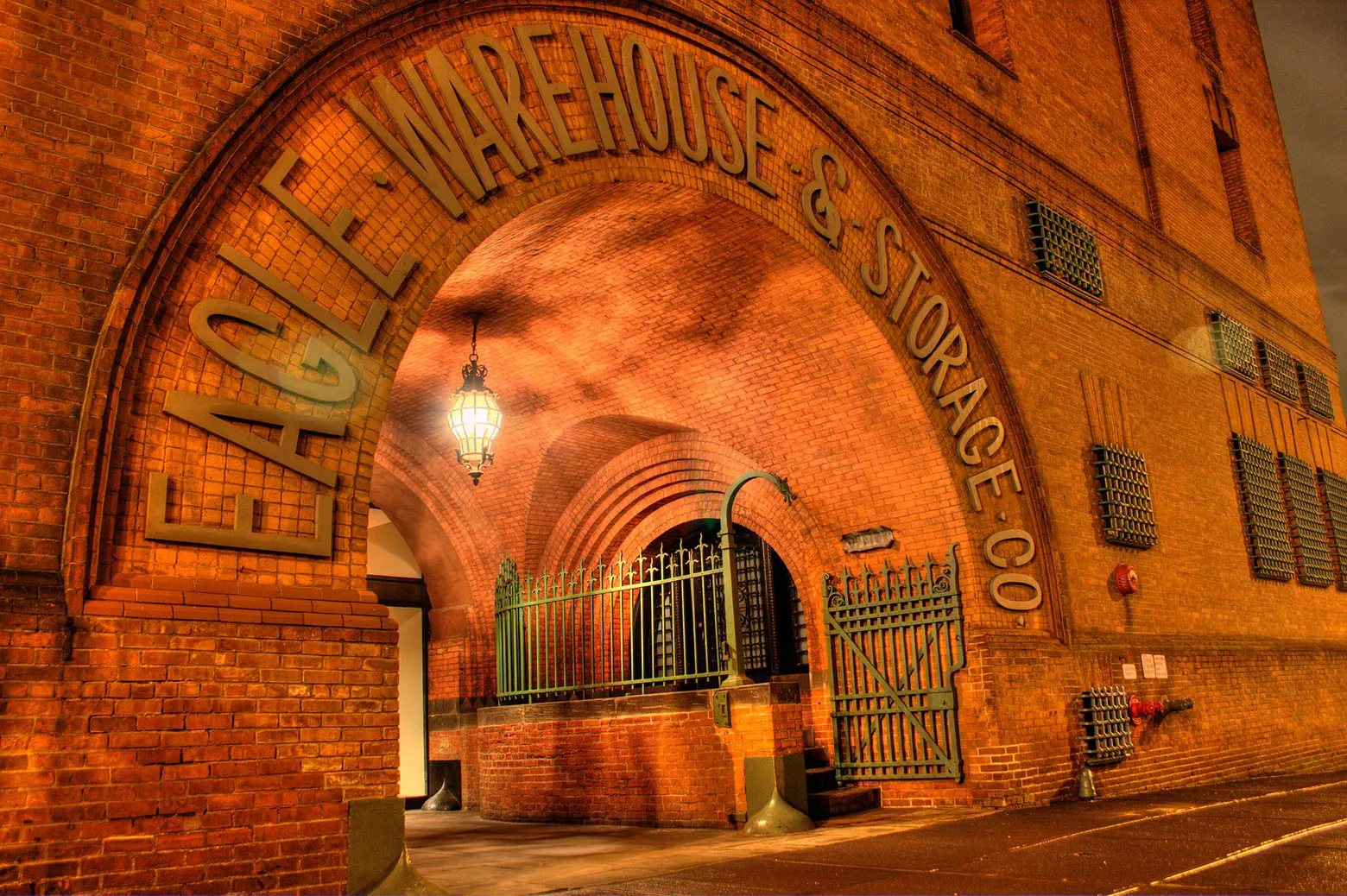
Eagle Warehouse Building via Wikimedia Commons
2. Eagle Warehouse Building
Nearby the Rome Brothers’ site, beside Whitman’s beloved Brooklyn Ferry, you’ll find the Eagle Warehouse Building, at 28 Old Fulton Street in Dumbo. The 1893 Warehouse is a masterpiece unto itself, and a designated New York City landmark, but, the site takes its name from another beloved Brooklyn fixture, The Brooklyn Eagle.
The Newspaper’s offices stood on the site from 1841 until the late 1880s or early 1890s. Between 1846-1848, Walt Whitman served as editor of the Brooklyn Eagle. The paper was one of many which he wrote for or helmed during his early career as a journalist.
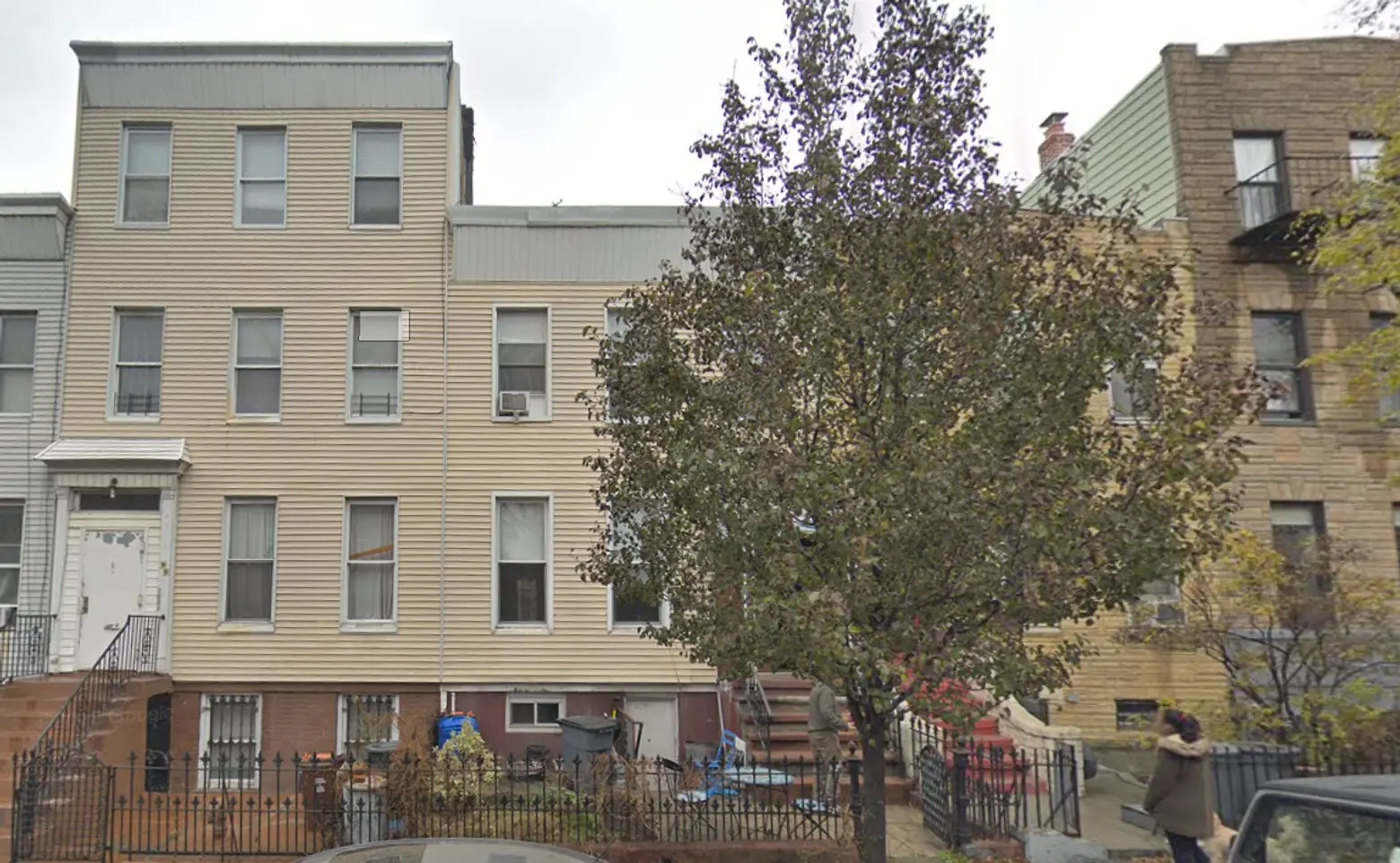
Google Street View of 99 Ryerson St.
3. 99 Ryerson St.
99 Ryerson St. in Wallabout is the only one of Whitman’s New York City homes that remains standing. Whitman lived the building in 1855 and completed the first edition of Leaves of Grass there. Currently, the site is not landmarked, but a coalition of community organizations including the New York Preservation Archive Project, the NYC LGBTQ Historic Sites Project, and the Walt Whitman Initiative, is fighting to get the site formally designated, given its profound connection to American arts and letters.
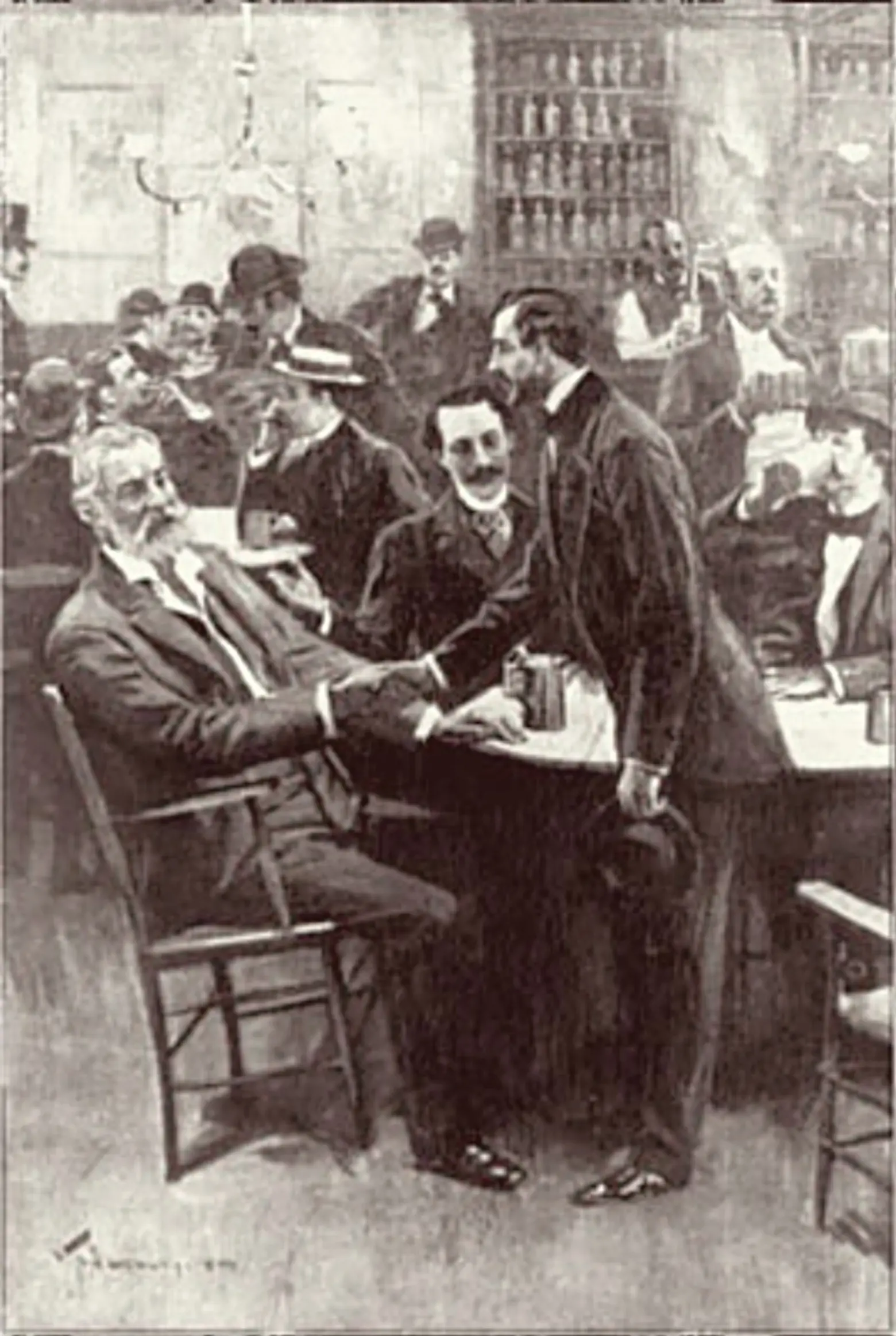 Walt Whitman sitting in Pfaff’s in 1857, via Wiki Commons
Walt Whitman sitting in Pfaff’s in 1857, via Wiki Commons
4. 645 Broadway, Pfaff’s
Another place deeply connected to American Arts and Letters, was Pfaff’s Beer Cellar, at 645 Broadway, near Bleecker Street. Pfaff’s was the center of mid-19th century bohemian New York. Whitman frequented the basement café regularly between 1858 and 1862.
Whitman recalled that he “used to go to Pfaff’s nearly every night…When it began to grow dark, Pfaff would politely invite everybody who happened to be sitting in the cave he had under the sidewalk to some other part of the restaurant. There was a long table extending the length of this cave; and as soon as the Bohemians put in an appearance.” The scene revolved around Henry Clapp, the editor of the Saturday Press and those assembled alongside Whitman included William Winter, Winslow Homer, and Adah Issacs Menken.
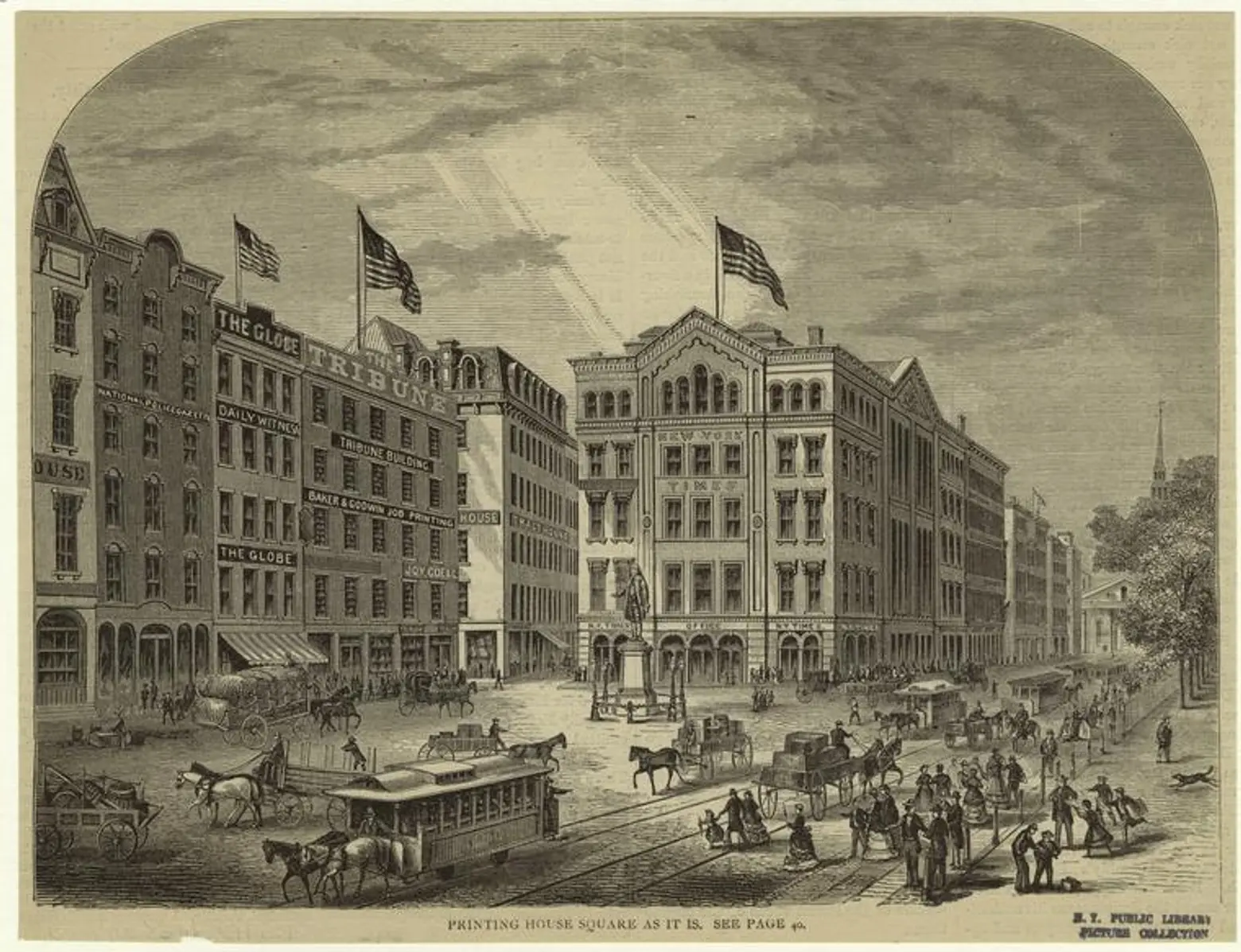
Printing House Square, Wallach Division Picture Collection Via NYPL Digital Collections
5. 27 Ann St., The Evening Tattler
During Whitman’s early years as a newspaperman, he found a champion in William Cullen Bryant, who published his freelance writing in the New York Evening Post. Before he published Leaves of Grass, Whitman and his work appeared all over Lower Manhattan’s Newspaper Row. He wrote for papers including the New York Leader, and the Broadway Journal, and he served as editor of The Evening Tattler, at 27 Ann Street.
6. 659 Broadway, Egyptian Museum
Like other 19th century-New Yorkers, Whitman was interested in the civilizations of Ancient Egypt. He frequented Dr. Abbot’s Museum of Egyptian Antiques in 1853. Whitman and Abbot became friendly, and Whitman returned to the exhibit again and again.
He wrote, ” The great ‘Egyptian Collection’ was well up in Broadway, and I got quite acquainted with Dr. Abbott, the proprietor—paid many visits there, and had long talks with him, in connection with my readings of many books and reports on Egypt—its antiquities, history, and how things and the scenes really look, and what the old relics stand for, as near we can now get. . .”
You can see the same collection Whitman saw, as it was transferred to the Brooklyn Museum in 1937!
7. Fowler and Wells’ Phrenological Cabinet at 131 Nassau Street.
In 1849 Whitman, began visiting Fowler and Wells’ Phrenological Cabinet at 131 Nassau Street (eventually replaced by the Temple Court building). There, his analyst and friend Lorenzo Fowler pronounced that Whitman’s leading character traits were “Friendship, Sympathy, Sublimity, and Self‐Esteem,” while his “dangerous faults” included “Indolence, a tendency to the pleasure of voluptuousness and…a certain reckless swing of animal will, too unmindful, probably, of the conviction of others.”
The pseudoscience of Phrenology, which suggested a link between the shape of one’s head and one’s character traits, was popular in the 19th century as a form of analysis that would allow the patient to better know himself. Such leading reformers as John Brown and Margaret Fuller submitted to phrenological analysis, but, the practice became racially charged when it was used by some practitioners to justify slavery before the Civil War.
Whitman turned to phrenology in the 1840s because he hoped it would offer a path to self-knowledge, which exhilarated him. Whitman’s stunning meditations on the self in Leaves of Grass, including “Song of Myself” and “I Sing the Body Electric,” were unprecedented in their intimacy and candor when they were published.
8. 308 Broadway
In fact, Whitman’s work was so frank, exhilarating and, as Emerson said “free and brave,” many booksellers would not handle the first edition of Leaves of Grass, but Fowler and Wells agreed to sell the book in their bookstore at 308 Broadway. Soon, the duo became agents for the book and published the second edition of Leaves of Grass in 1856.
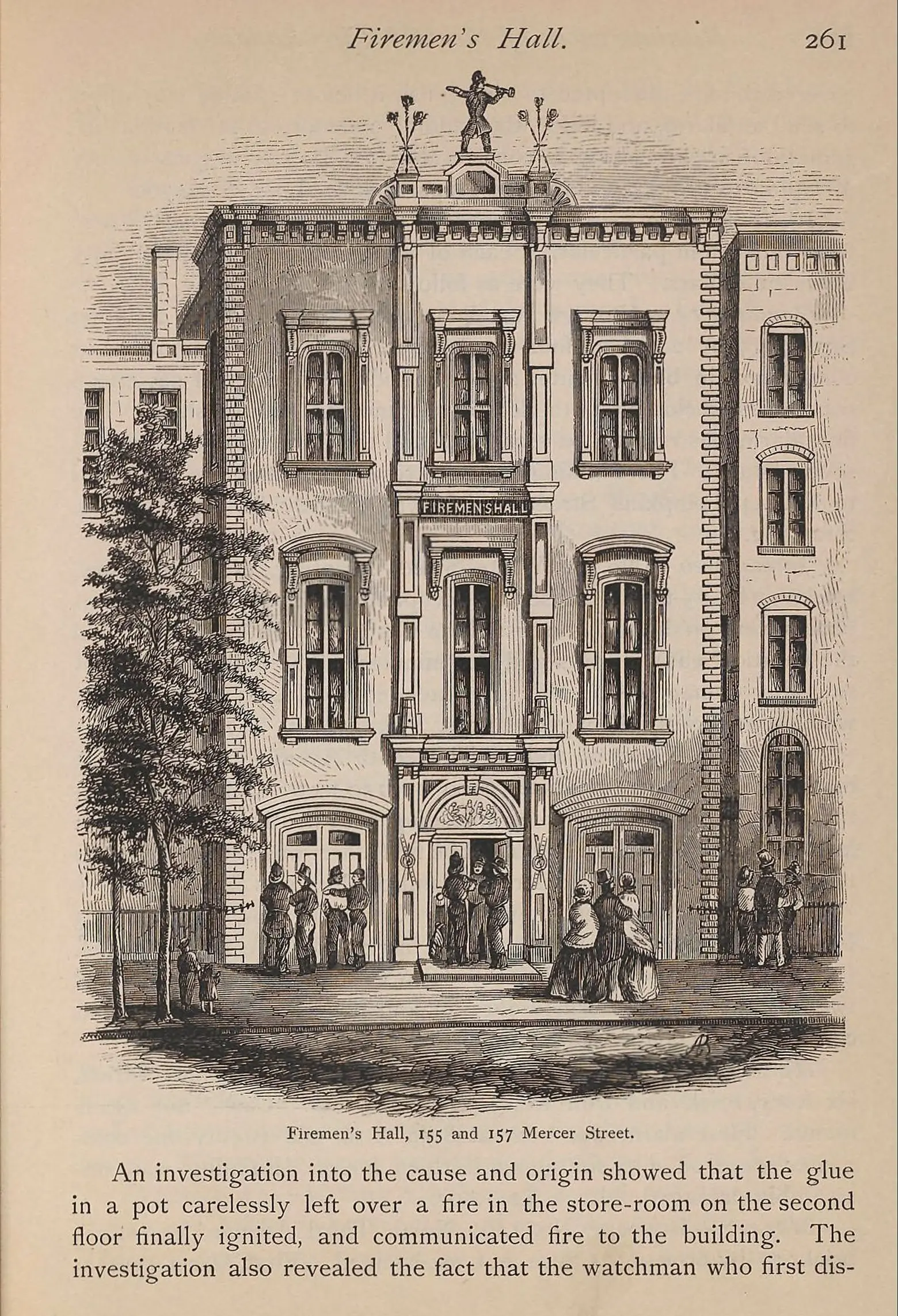 The former Firemen’s Hall at 155 and 157 Mercer Street, via Internet Archive Book Images/Flickr cc
The former Firemen’s Hall at 155 and 157 Mercer Street, via Internet Archive Book Images/Flickr cc
9. 155 Mercer where Whitman and Emerson met for a beer
When we think of the greatest writers of American cannon getting together over drinks, the example of Ernest Hemingway and F. Scott Fitzgerald may come to mind. But, decades before those two boozing bros hit the scene, there was Walt Whitman and Ralph Waldo Emerson.
When Leaves of Grass was originally published in 1855, a stunned Emerson found in it “incomparable things said incomparably well.” In December 1855, on Emerson’s first to New York after Leaves of Grass was published, Whitman took his fellow poet to 155 Mercer Street, the site of the last volunteer firehouse built in New York City. In the firehouse’s social hall, the two men discussed poetry over glasses of beer.
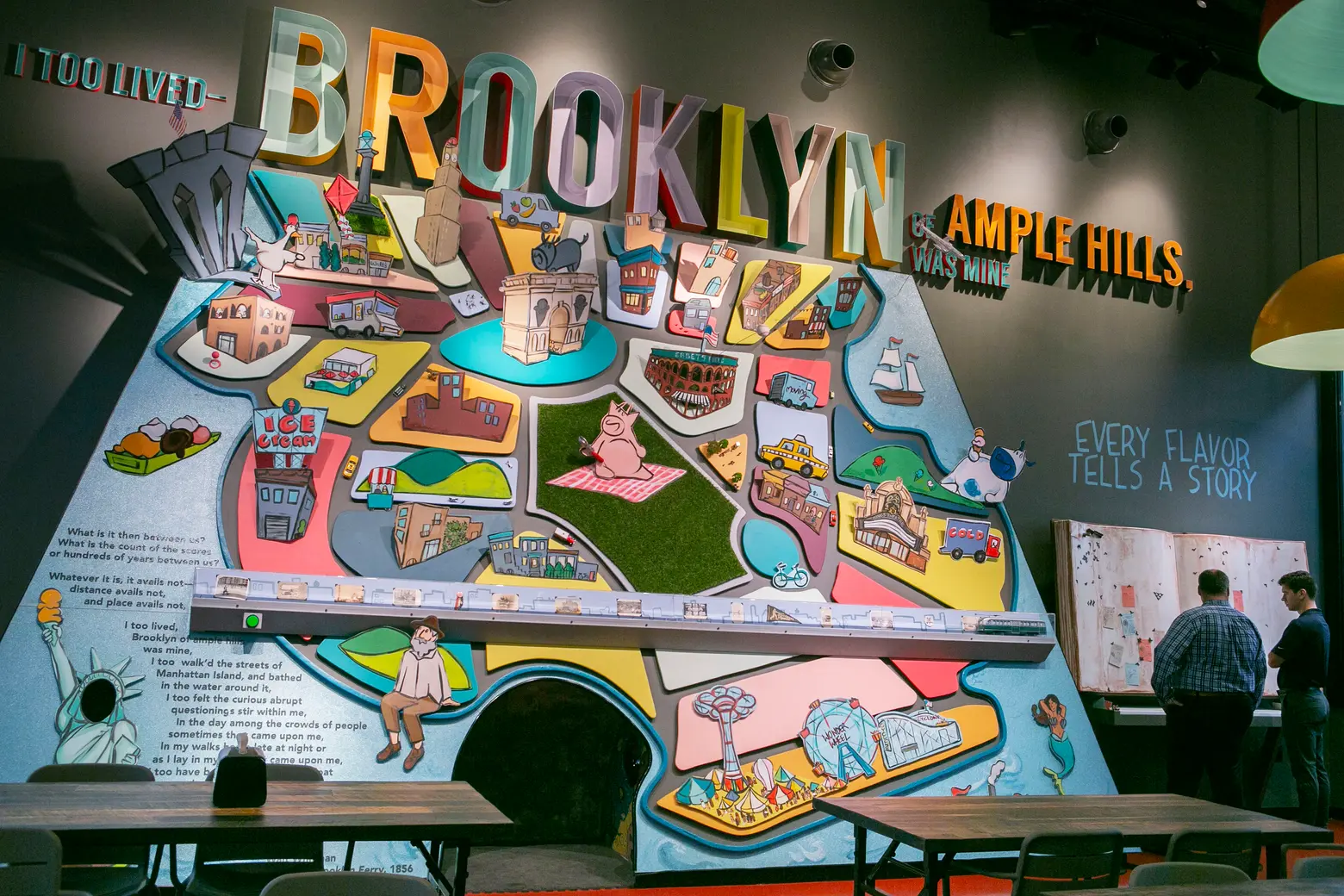
Map of Brooklyn at Ample Hills Creamery featuring Whitman and quoting crossing Brooklyn Ferry. Photo by Kate Glicksberg for 6sqft
10. Ample Hills Creamery
You might not be able to down any draughts with Whitman today, but you can snag an ice cream cone that pays homage to him at Ample Hills Creamery. The Brooklyn-based ice cream phenomenon operates the city’s largest ice cream factory. On the lower left corner of the map above, you can see Walt Whitman opining on Ample Hills. Through time, through words and even through ice cream, Whitman is with us.
+++
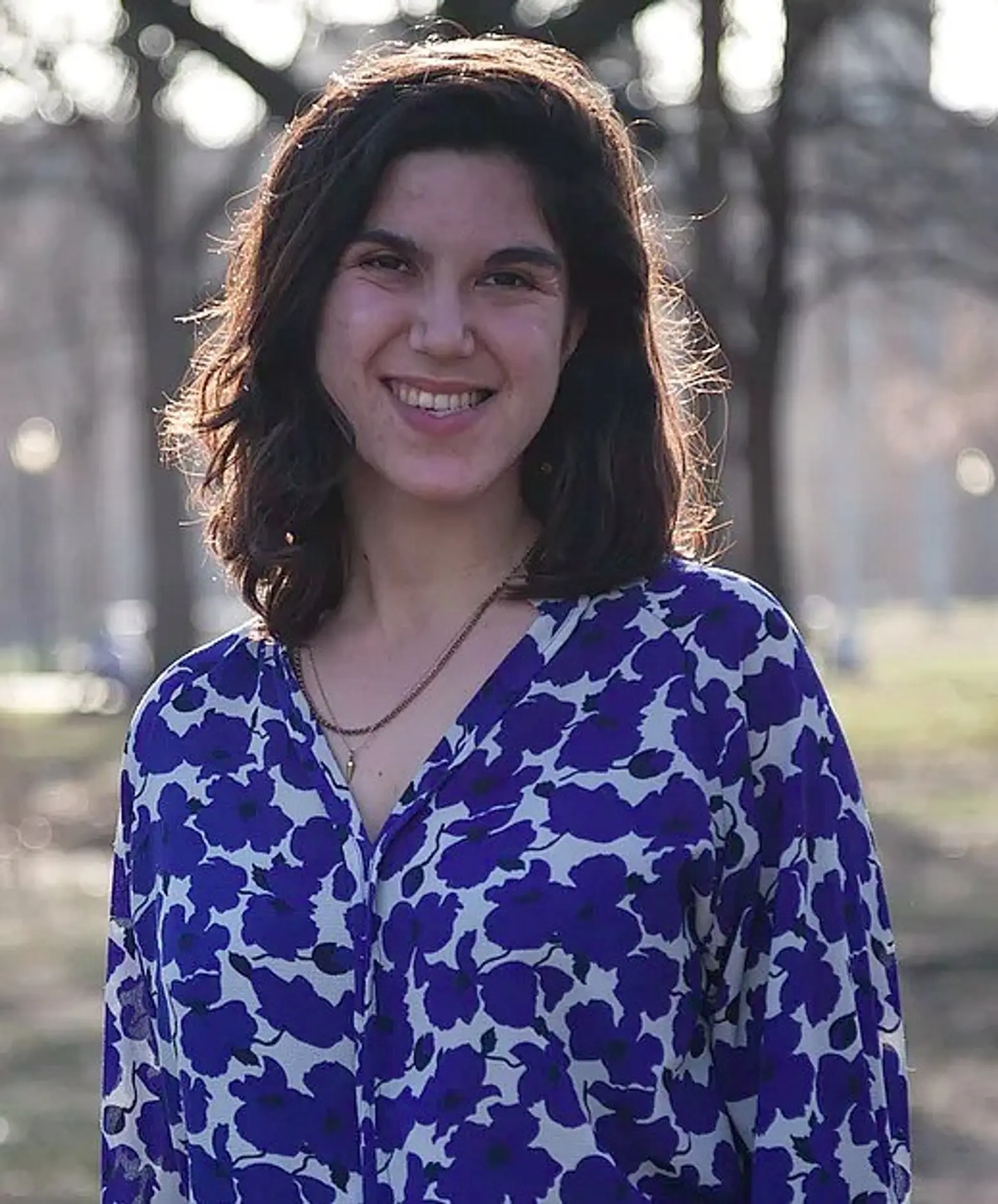 Lucie Levine is the founder of Archive on Parade, a local tour and event company that aims to take New York’s fascinating history out of the archives and into the streets. She’s a Native New Yorker, and licensed New York City tour guide, with a passion for the city’s social, political and cultural history. She has collaborated with local partners including the New York Public Library, The 92nd Street Y, The Brooklyn Brainery, The Society for the Advancement of Social Studies and Nerd Nite to offer exciting tours, lectures and community events all over town. Follow her on Twitter and Instagram.
Lucie Levine is the founder of Archive on Parade, a local tour and event company that aims to take New York’s fascinating history out of the archives and into the streets. She’s a Native New Yorker, and licensed New York City tour guide, with a passion for the city’s social, political and cultural history. She has collaborated with local partners including the New York Public Library, The 92nd Street Y, The Brooklyn Brainery, The Society for the Advancement of Social Studies and Nerd Nite to offer exciting tours, lectures and community events all over town. Follow her on Twitter and Instagram.
